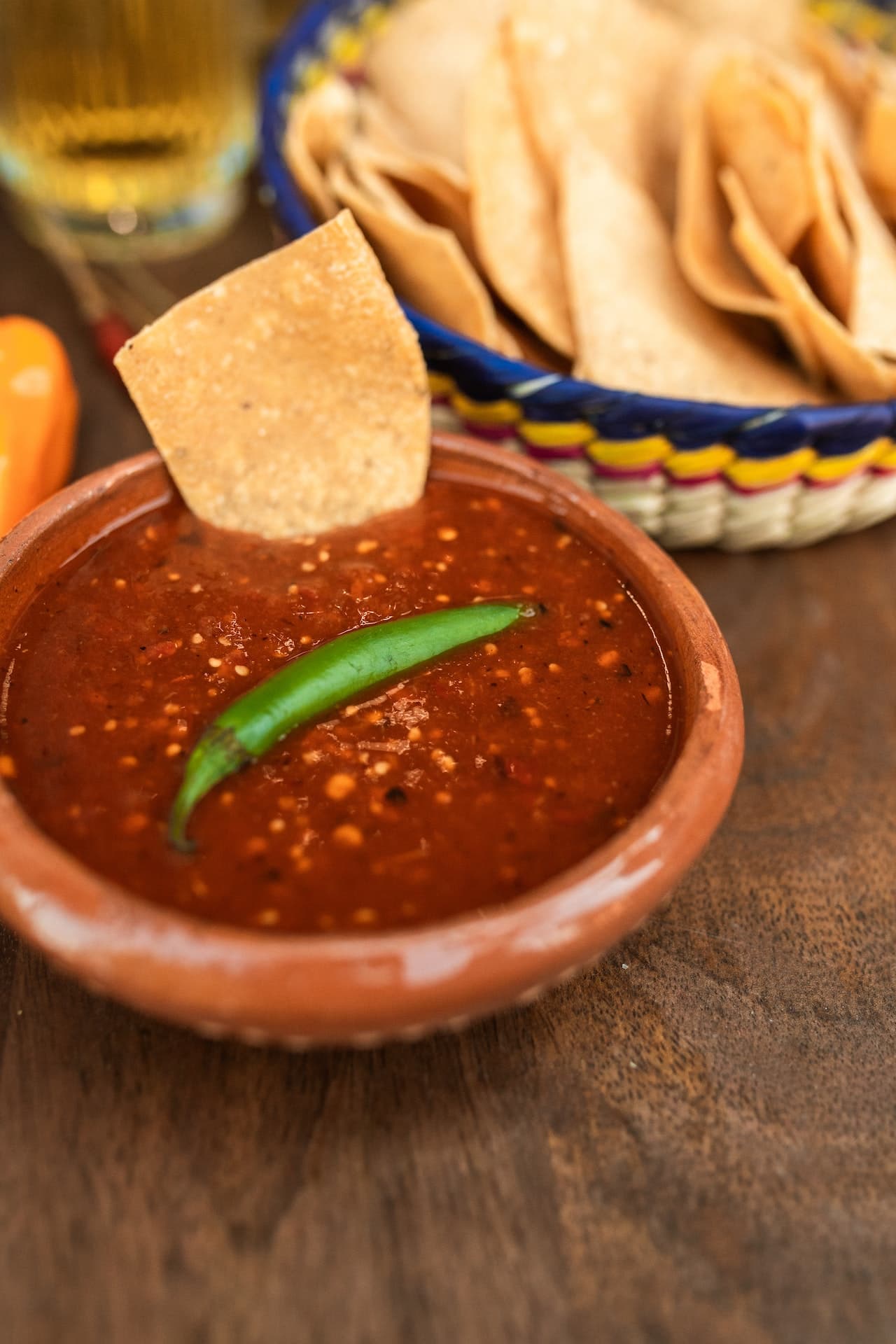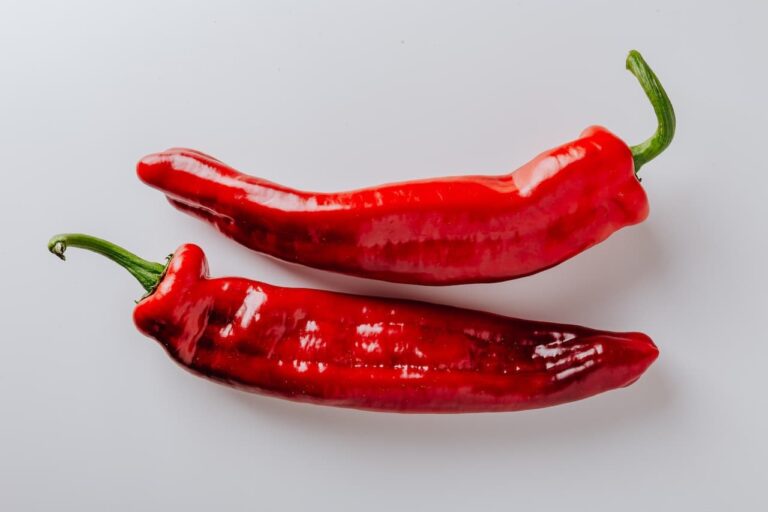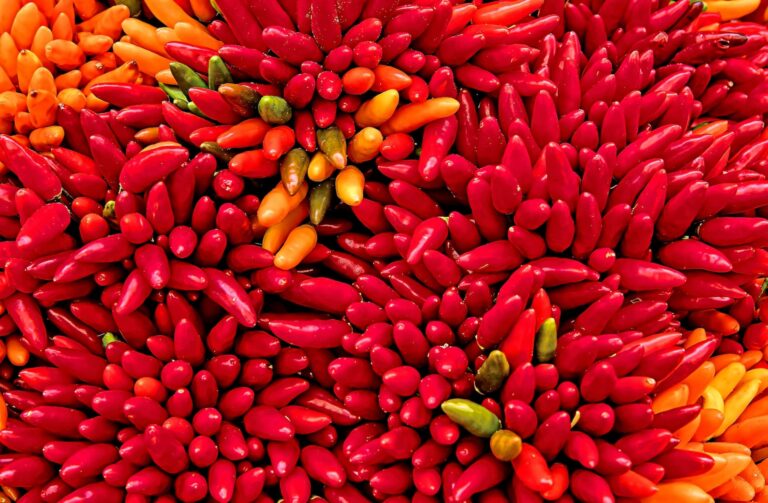Hot sauces are an integral part of Mexican culture. With such a rich history, the sauces are used to add not only flavor, but also authenticity to Mexican dishes. It’s this authenticity has allowed them to become so popular worldwide.
Hot sauces have been used for thousands of years to add flavour to meals, drinks and snacks. In some cases, they were even used for medicinal purposes.
As history’s progressed, different countries have been able to take inspiration to create their own hot sauces. Nowadays, different hot sauces are both popular and widely available for anyone to spice up a meal.
Ancient Legacy
The origins of Mexican hot sauces date back to 7000 BC, during the time of the Aztecs [1]. During this time, hot sauces were only made up of two ingredients which were chilies and water, so the heat would have been quite extreme.
Two thousand years later, Aztecs began to grow their own chilies, instead of picking them from the wild. This meant the production of hot sauce soon increased and with the sauce being non-fermented, it allowed for a fresh flavor that really intensified the meals of the Aztec people.
From a medicinal view, the Aztecs used hot sauce to cure sore throats, stomach upsets and colds. Once the initial kick from the chilies had subsided, hot sauce worked particularly well at curing common health problems.
As history progressed, hot sauce became an integral part of Mexico’s daily life, whether it was used for medicines, or to celebrate festivals and celebrations.
It’s well known that Mexicans have many traditions and festivals in their annual calendar, such as Cinco de Mayo, and with this comes plenty of celebrations, including plenty of food.
Throughout history, hot sauce would have been used during celebratory meals, helping to bring families together. Whether it’s through sharing recipes, or the whole family sitting down and sharing their favorite sauces, hot sauce played a key role in festivals and traditions.
Characteristics That Define Mexican Hot Sauces
A distinct feature that sets Mexican hot sauces apart from the rest is the fact that they have a fresher taster. Unlike other hot sauces, they don’t taste as vinegary. This is largely down to the fact that Mexican hot sauces don’t include added preservatives because they don’t need to be fermented.
A non-fermented sauce means the natural flavorings of a chili really pull through and give the sauce a kick that’s completely different to others. Key ingredients include habanero, chipotle, pequin and jalapeno chilies. Together, they create a smooth and fresh blend of hot sauce that compliments a wide range of Mexican meals and drinks.
There are even different types of Mexican sauces, depending on personal preference. A person can opt for milder versions, tangier versions or zestier versions [2]. No matter what version of a hot sauce is purchased, it still doesn’t alter the level of quality a Mexican sauce brings. Each version will still be non-fermented and each variation having an element of freshness.
What Makes Mexican Hot Sauces Stand Out
Mexican hot sauces are known to stand out from the crowd. This is not only down to their ingredients but also the way they’re made and their versatility.
When compared to an American hot sauce, such as a Louisiana-style sauce, a person may notice a difference in both consistency and taste. An American hot sauce uses fewer ingredients and more vinegar [3], which gives the sauce a runnier and more acidic taste.
A Mexican hot sauce will feature more ingredients and spices and have a thicker consistency. This allows the taste of the sauce to feel like it has more layers. The thickness also works better as a condiment so it can be enjoyed on the side of any meals.
The versatility that comes with a Mexican hot sauce also allows it to stand out from the crowd. The complex and fresh taste of a Mexican sauce means that it doesn’t have to be used as just a condiment, but it can also be used as a cooking tool and added to any foods to create top notch meals. When added to popular meals such as chilies or stews, it gives the food a distinct taste and a unique kick that a meal may not get with any other version of hot sauce.
Top Mexican Hot Sauce Brands
CHOLULA
Considered the most popular of all Mexican hot sauces. Cholula has a thinner consistency compared to other Mexican sauces. Even though it’s still spicy, it doesn’t have as much of a kick as others.
The sauce is based on an old family recipe that has been passed down through generations, making it one of the most authentic hot sauces out there.
The Cholula recipe makes sure to balance both flavor and spice, so you don’t have to worry about the heat being overpowering. Created with a mix of arbol, piquin peppers and a variety of spices, these ingredients give the sauce plenty of flavor [4].
It’s the perfect companion for your tacos and with a Scoville heat unit (SHU) of 3,600 [5], it isn’t too hot to be used as an everyday sauce.
If you’re struggling to decide between Cholula and Valentina for your hot sauce, then it may be worth noting that Cholula is thinner and slightly spicier. It’s also much saltier, containing nearly double the amount of Valentina.
Bufalo
Bufalo hot sauce is the perfect option if you’re after more zest. The sauce has a thicker consistency compared to others, meaning it can be used more as a dip. It’s the perfect companion to have with any chips, giving them a hot and tangy kick.
It’s a family-made sauce that has roots going all the way back to 1933. With the same family still creating the sauce now, it means it’s kept its originality, and this is part of what makes it so unique. As a family-run business, the sauce can stick to its authenticity and not shy away from its roots.
With notable flavorings of guajillo peppers and lime, this sauce creates a balance between heat and citrus. The sauce still brings the desired kick that’s needed with all hot sauces, but also has a refreshing and unique element to it.
With an SHU of 10,000, this sauce is one of the hotter ones. This is another reason why it’s also a great option to use as just a dip. Pour too much of this in your cooking and it could ruin the whole meal. Along with dips, Bufalo sauce is also great to pair with other snacks such as popcorn, breadsticks and chicken bites.
El Chilerito Chamoy
El Chilerito Chamoy sauce is a newer hot sauce compared to some of its competitors. The sauce first popped up in 1999 as a part of the Chilera Tapatia family in Guadalajara, Jalisco, Mexico [6]. It wasn’t long until the sauce became one of the most popular Chamoy sauces in the country. Over twenty years later, this is still the case.
Made of only the highest quality ingredients, the El Chilerito Chamoy sauce uses a blend of both peppers and fruits to give it a sweeter and tangier taste. A key fruit in the El Chilerito hot sauce is plums. These have been used to give the sauce its signature sweet and tangy taste. The blended ingredients create a combination of both sweet and sour thanks to its key ingredients of peppers and citric acid.
The flavorsome notes of El Chilerito Chamoy make it a popular choice to include in cocktails, such as the classic margarita, or even drizzled onto candies.
Tajin
Similar to El Chilerito hot sauce, Tajin is a relatively new hot sauce brand. The Tajin brand was created in 1985, where the brand also created the Tajin sauce at the same time. It wasn’t long until Tajin gained popularity, and in the early nineties, it began shipping its hot sauce to the US.
Throughout the 21st century, Tajin focused on perfecting its packaging and brand message and now, in the 2020s, its available in over 30 different countries [7].
This hot sauce is more on the mild side, with the sauce created from a blend of mild chili peppers, lime and salt. This simple ingredient list means that there are no nasty hidden ingredients and allows each flavor to stand out. With three simple ingredients, it means each one is easy to distinguish, and each flavor can stand out.
Tajin also has similar food pairings to the El Chilerito hot sauce. It’s commonly used to compliment sweeter foods such as popcorn or candy. Many people also use it as a dip for savoury snacks such as fries or chicken bites. It can also be used to spice up alcoholic drinks ranging from beers to margaritas.
As a mild hot sauce, the SHU of the Tajin sauce is 5,000. So, while it still has a kick to it, Tajin prefers to focus on the flavor rather than the heat.
Valentina
The Valentina hot sauce is a part of the Tamazula group and was first produced in 1960. The sauce soon became popular throughout Mexico and as history progressed, the sauce has now become available internationally, such as the US and Canada [8].
It’s one of the most popular hot sauces available to buy and that’s largely due to its classical blend of ingredients. Made from puya chilies, vinegar, spices and water, this hot sauce lets the flavorsome chilies and spices do all the talking, making sure they complement each other to create the best tasting hot sauce.
As a medium heat sauce, Valentina is often used on foods such as chips, eggs or even cucumber. It can be used on blander tasting food to give it a playful kick and to add some interest to your snacks.
If you’re new to hot sauces, then the Valentina sauce may be a great first option thanks to its low SHU. At 900, it’s on the lower end of the Scoville scale and a much milder hot sauce compared to other brands. It’ll be able to liven up any food without causing any watering eyes or the need to gulp down any water.
Salsa Huichol
The history behind Salsa Huichol is unlike any other popular hot sauce brands. The founder, Don Roberto, started out with only 40 pesos in his pocket, when he founded the company in 1949. During this period of little money, Roberto decided to make a bulk job of hot sauce from an old family recipe. Before he knew it, the business began to grow and now he’s the owner of one of the most successful hot sauce brands globally [9].
Sticking to its family recipe roots, this hot sauce is created with all natural ingredients, meaning the sauce will have a fresh taste each time you use it. With its chili peppers grown specifically on the Nayar Huichol mountains, it means you can experience an authentic taste of Mexico each time you use the sauce.
Popular foods to eat with the Salsa Huichol sauce include shrimps. A popular cooking method involves, frying the shrimp in some melted butter and then adding the sauce. Once the shrimp is cooked, you can then drizzle on some fresh lemon or lime, sit back and enjoy. You can pair it with a side of rice or fries to make it into a meal.
The SHU for this hot sauce is on the lower end, with the sauce coming in at a level of 3,000. This means you can still experience a kick from this hot sauce without it being too overpowering.
The Benefits Of Including Hot Sauce In Your Diet
When you think of hot sauce, you don’t automatically think of the health benefits. However, there are plenty of advantages that come with regularly eating Mexican hot sauce.
One of the main components of chili peppers is capsaicin. It has many health benefits such as being an anti-inflammatory, aiding weight loss and acting as pain relief. Studies have found that capsaicin can increase your metabolism when you burn energy and fat, and in some cases even reduce your appetite [10].
With a main ingredient of hot sauce being chili peppers, it also means the sauce is full of vitamin C. This key vitamin helps to promote a healthy immune system, protecting you from any nasty colds and viruses.
The journey of Mexican hot sauces dates all the way back to ancient times, so it’s no wonder they’ve become so popular as time has progressed. It’s a tried and tested recipe that’s had a huge global impact.
Even though each sauce is similar regarding its main ingredients being chilies and water, they’re also completely unique at the same time. With some having a citrus tang to give a refreshing taste, some being created with fruit so they can be drizzled over sweet foods, or some being so hot that even a smallest taste will leave your eyes watering.
If you don’t believe the hype, then why not try for yourself the uniqueness of a Mexican hot sauce?
Sources
10. Juber, M. “Health Benefits of Capsaicin.“ Web MD, Nov 22.
[1] Whalebone. “The History of Hot Sauce.” Whalebone.
[2] Linares, K. “5 Authentic Mexican Hot Sauce Brands, And How to Use Them.” Prevention, Aug. 2020.
[3] Kindelsperger, N. “Hot Sauce Tasting: The Ultimate Guide to America’s Most Popular Brands.” Chicago Tribune, Feb. 2020.
[4] Cholula Hot Sauce. “Cholula, The Mother of Sauce.” Cholula.
[5] Scoville Scale. “Hot Sauce Scoville Scale.” Scoville Scale.
[6] El Chilerito. “Quienes Somos.” El Chilerito.
[7] Tajin. “About Us.” Tajin.
[8] Valentina. “Our History.” Valentina.
[9] Staff, MND. “With 40 Pesos, Don Roberto Launched His Now-Famous Salsa Huichol.” Mexico News Daily, Oct. 2019.
[10] Juber, M. “Health Benefits of Capsaicin.” WebMD, Nov. 2022.







